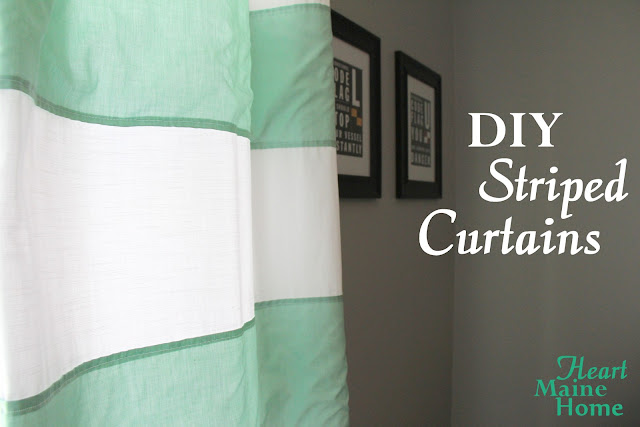Hi all! Any of you in the middle of this crazy blizzard like we are? It's still snowing, and we've already gotten more than two feet! It's by far the most snow I've ever seen in my life...totally crazy.
Colby is loving it, though!
I'm back with part two of our entryway redo. We left off here:
I forgot to mention in my last post that I also had to paint the ceiling, since we took down walls and had to patch drywall. We also got a new light fixture from Lowe's. This semi-flush mount was only about $100. I love it!
This is the only picture I have of the old light, from back before we even bought our house. The new one is big improvement!
So now we had a nice big, open space in dire need of some storage.
Obviously, we wanted a place to hang coats and store shoes, but we also
had an opportunity for some additional storage in this space. I was
picturing some open storage with cute baskets, like this:
But
the hubs was envisioning some cabinets for closed storage. In the end,
he won me over, and we came up with a plan for a floor-to-ceiling pantry
and a row of cabinets along the ceiling, with coat and shoe storage
underneath -- similar to this:
We
were hoping to find some off-the-shelf cabinets that we could make work
for our plan, but our space is odd-shaped, so that was out. We needed
to do something custom, but the price of custom cabinets was out of our budget.
Handy hubs to the rescue again!
With his dad's help, he
designed and built custom cabinets to fit our space. He made them out
of birch plywood, with face frames made out of maple.
To make them safe
and secure, he installed them onto strips of wood screwed into the wall
studs.
Once the cabinets were installed, I was up
again, paint brush in hand. I primed them with some Zinsser B-I-N and
painted them with semi-gloss white latex paint by Behr. It took a few
coats to cover them. To get a smooth finish, I used some Floetrol to
extend the drying time.
I painted the cabinets before
they were installed, and I didn't paint the face frames, because we
wanted to fill the cracks to make them look like one piece.
A simple wooden rod installed under the cabinets serves as a coat rack.
With the cabinets in place, it was time to tackle the floor. As I mentioned, we had to tear out the old floor because we removed
walls, leaving gaps in the tile, and we could find anything to match it.
I was kind of sad to tear out the old tile -- it wasn't my favorite,
but it was slate, so it felt kind of wrong. While some of it broke when
we were taking it out, we were able to save a good amount, so hopefully
we can reuse it somewhere else.
Not only did we have
to tear up the tile, but then we had to rip up the plywood the tile was
stuck to, since it was all covered in old thinset and super uneven.
(Sorry I didn't get any photos of this process -- it was ugly and I
just wanted it over!) There was a second layer of plywood under the
first, leaving us with what you see above.
We
decided to go with tile again in this space instead of hardwood since it
would get exposed to a lot of moisture. But we had never done any kind
of tile and were a little nervous about it. We also were looking for
something we could do fast, since we were trying to get it done before
winter came and we were trudging in with wet boots.
While perusing tile at Lowe's, I stumbled onto this:
Have
you heard of it? It's called
SnapStone, and it's porcelain tile with a
rubber grid and plastic tabs attached to the bottom. You don't need to
use thinset -- the tabs click together and hold the floor in place. It's
essentially a floating tile floor.
We did some
research on it and decided to go with it. It sounded easy to use and
fast to install. It's a little more expensive than the cheaper regular
tile, but we didn't need to do a very big space, so it wasn't too bad.
We picked a 12-inch tile in a
color called Camel (it looks like it's no
longer available). They come in boxes of five for $30, and we had to
special order it through Lowe's. We bought a total of 13 boxes to make
sure we had enough in case we broke some or made mistakes (and we did!), and we had one box left to spare when it was all over.
Before
the tile went down, the hubs installed some luan -- a thin type of
plywood that was just the right thickness to get the tile even with the
hardwood in the kitchen. Then, we plotted out how we wanted to lay the
floor. I swear this took longer than the actual labor. We wanted to make
sure the design looked right and that we ended up with as few little
pieces on the edges as possible. We ultimately decided to go with an
offset pattern running from the front door into the kitchen...does that
make sense? Maybe this photo will help:
I installed the tile while the hubs did the cutting on the end pieces.
I'll have another post on the details of installing the tile, so for
now I'll just say that it wasn't as easy as the installation videos made
it look, but overall it was fairly simple and I'd definitely use it
again.
We finished the installation in a day -- and next time we use them it would take even less time, since we know how it goes.
Now
it was time to grout. Because it's a floating floor that will expand
and contract, you have to use a flexible grout that they make
specifically for SnapStone. There are a few color choices -- we chose
Mushroom. We picked up
two buckets at Lowe's but only needed one in the end.
The grouting went very fast -- I did it in a couple hours.
You
aren't supposed to grout around the wall -- you're supposed to leave it
open, or use a silicon caulk if you have a high-moisture area (like a
bathroom). We left it open around the walls, since the baseboards will
cover the gap.
We used caulk between the tiles and the two doors, since
there's no trim to cover the space -- they make a caulk that matches the
SnapStone grout. The silicon cracked when it dried, so we need to add
another layer on top.
I was sad to tear out the slate, but now I'm not missing it at all -- I love this floor! I love the variation in the colors and the warm hue.
After the floor was finished, we added shelving to the cabinets. Since our cabinets are a custom width, that also meant custom
shelves. The hubs made these out of birch plywood and trimmed the fronts
with pine trim. I primed and painted them like I did the cabinets.
Meanwhile, I was also busy planning out what to do in the corner where the small closet was. I really, really love entryways with benches. They're a place to sit to put on your shoes, to toss your purse when you get home -- and they're also totally cute, right?
We decided not to go the custom route this time -- luckily I found lots of benches that would fit nearly perfectly on this wall. I picked up
this one from Target:
I was happy to get my open storage and baskets! I totally have a thing for baskets -- they're like everywhere in my house. The hubs thinks it's weird... :)
To give this bench a custom look and jazz it up a bit, I decided to recover the cushion in some fabric I had on hand. I'd bought it because I loved it but wasn't sure what to do with it. The colors went great in the entryway!
I am not a good sewer, and I kind of made up making a new cover. It's definitely not pretty -- don't look too closely or you'll see all my mistakes! On the bench, though, you can't tell. I didn't make the cover removable -- I just used no-sew fabric tape to seal the back edge together.
The Target cover came with Velcro pads on the bottom that stick to ones on the bench. I used a seam ripper to get them off the original cover and then handstitched them to my new cover. So cute!
So, here's where we are now!
In case you can't tell, I did not stage these cabinets -- this is really what they look like, full of tools and supplies to finish the job, plus some random baskets of mittens and scarves.
There's still lots to do in here. We need to install a permanent shoe rack -- it'll probably just be a shelf along the bottom with space for shoes above and below. The hubs is adding drawers to the bottom of the pantry cabinet, and he needs to make some doors.
I also need to paint the face frames and the doors, once they're made. We also need to trim out the gaps underneath the cabinets, and the base of the cabinet. The trim has been cut and primed, so now it needs to be installed, and then I'll paint it.
The trim around the doors and the baseboards need to get reinstalled and given a fresh coat of paint. And the outlet and light-switch covers need to go back on. And over the bench I have plans to make a cute shelf with hooks underneath. Something like this:
Lastly, we need some hooks near the door for keys, and I'd like to add a place to put mail too. I'm working on those details!
Let's put this all in a list, shall we?
Left to do:
- Install a shoe rack
- Build and install drawers
- Install and paint trim around cabinets
- Build and paint cabinet doors
- Replace trim around doors and baseboards, and paint
- Replace outlet covers
- Make shelf and install hooks over bench
- Make a key-and-mail holder
We're so close -- I can't wait to get this done! Even though it's not finished, I think I can finally call this a mudroom instead of an entryway -- it feels like a real room now.






































.JPG)



+%5B1600x1200%5D.JPG)
+%5B1600x1200%5D.JPG)























